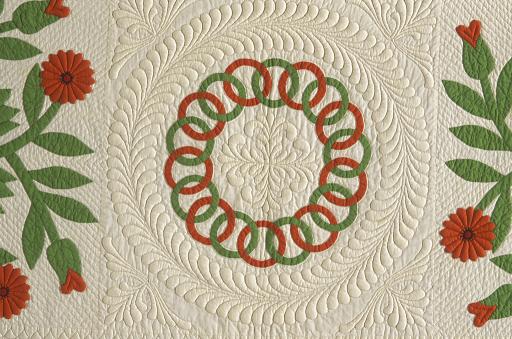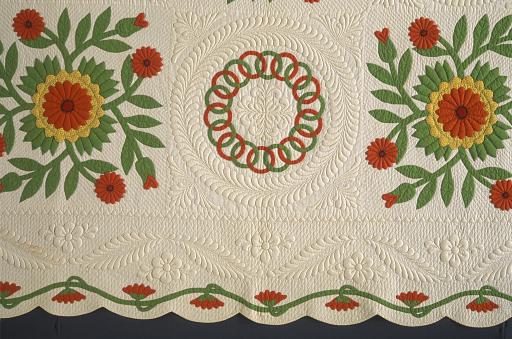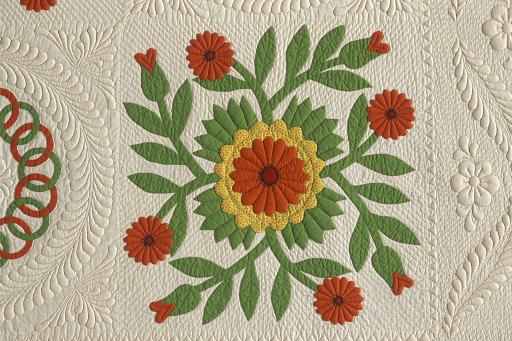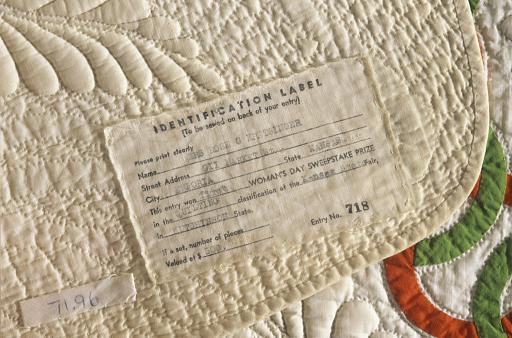Calendula quilt, or Allen Rose, or variation of the Democrat Rose Variation quilt, Rose Frances Good Kretsinger
Artwork Overview
Rose Frances Good Kretsinger, artist
1886–1963
Calendula quilt, or Allen Rose, or variation of the Democrat Rose Variation quilt,
1930–1932
Where object was made: United States
Material/technique: stuffing; cotton; embroidering; patchwork; quilting; appliqué
Credit line: Gift of Mary Kretsinger
Accession number: 1971.0096
Not on display
If you wish to reproduce this image, please submit an image request





























